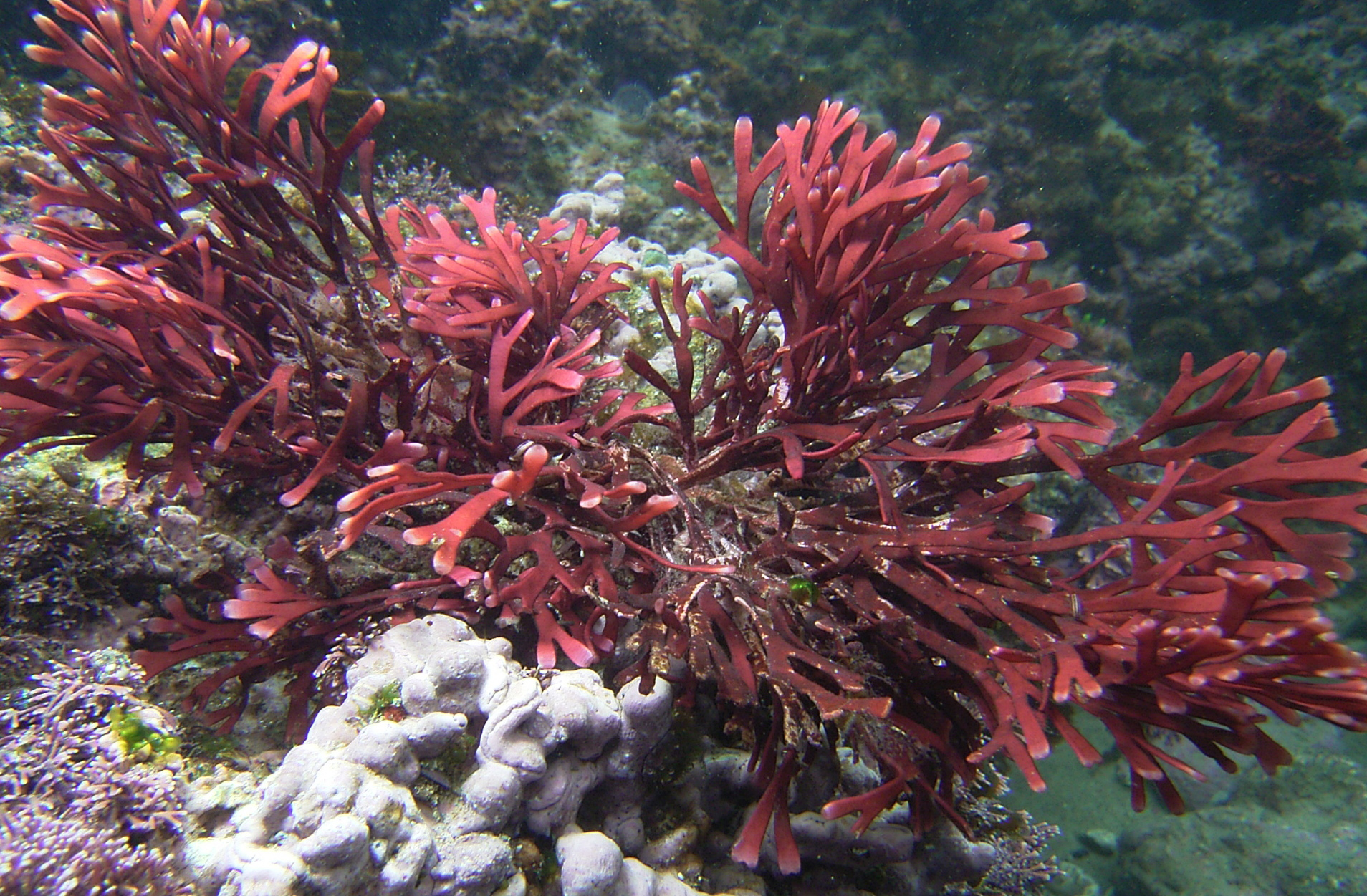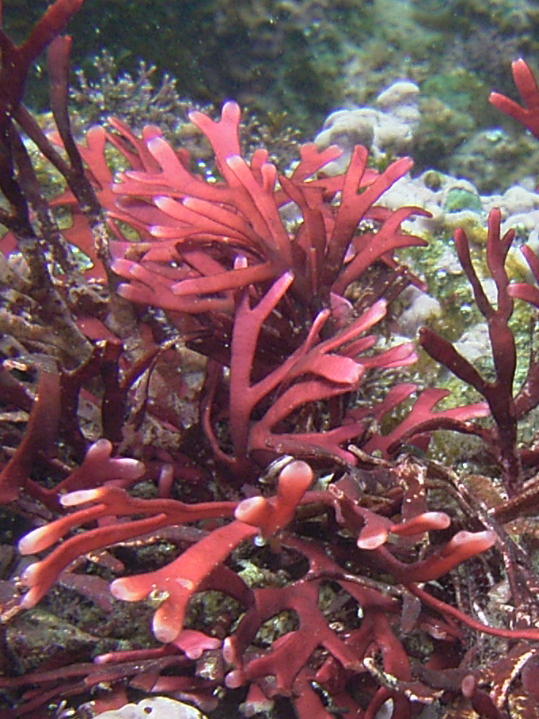Seaweeds of the South African South Coast


Order Nemaliales
Family Galaxauraceae (see Huisman et al., 2004)
Dichotomaria tenera (Kjellman) Huisman, J.T. Harper & G. W. Saunders 2004: 230
Thallus erect, bright reddish-pink, up to 12 cm tall, regularly (every 3-8 mm) branched, moderately calcified; lower 1-2 cm often terete and hirsute, axes compressed, jointed, usually not constricted at joints, 1-2.5 mm wide, often with inrolled edges forming ridges along margins; transverse striations present especially apically; well-developed rhizoidal holdfast. Internal structure of filamentous medulla and multilayered cortex; tetrasporophytes with inner cortex of two layers of globose/rectangular cells subtending a layer of slender stalk cells bearing an outer epidermal layer of subglobose or pointed epidermal cells, epidermal cells often not touching one another. Gametophytes with tightly adherent epidermal cells, some of which may bear pointed spinose cells.
Collections ecology and regional distribution
Recorded from Kei Mouth area eastwards to northern Kwazulu-Natal (43-58). Mainly a subtidal species, recorded to 43 m depth in Kwazulu-Natal (De Clerck et al. 2005), but also found in rock pools.
World distribution: Recorded from East Africa and also Mauritius (Børgesen 1942).
Type locality: Mombasa, Kenya (Silva et al 1996).
Note: This entity from the South Africa coast was previously known as Galaxaura tenera, but was synonymised with Galaxaura marginata (Ellis & Solander) Lamouroux by Papenfuss et al. (1982). Subsequently, Huisman et al. (2004) resurrected the genus Dichotomaria to include the G. marginata complex but recognised the South African entity as Dichotomaria tenera on account differences from Australian and Caribbean D. marginata. However, De Clerck et al. (2005) point out that some South African specimens do have apiculate epidermal cells and thus may not be distinct from D. marginata.

Dichtomaria tenera, shallow subtidal, Mzamba.

Dichotomaria tenera, close view.
References Dichotomaria tenera
Børgesen, F. 1942. Some marine algae from Mauritius. III. Rhodophyceae, part 1, Porphyridiales, Bangiales, Nemalionales. K. Danske Vid. Selsk. Biol. Medd. 17 (5). 64 pp., 27 figs, 2pls.
De Clerck, O, Tronchin, E. M., Schils, T. 2005. Red algae. In: De Clerck, O., J.J.Bolton, R. J. Anderson and E. Coppejans, 2005. Guide to the Seaweeds of Kwazulu-Natal. National Botanic Garden of Belgium, Brussels (Scripta Botanica Belgica), pp. 130-269.
Huisman, J. M., Harper J. T. & G. W. Saunders 2004. Phylogenetic study of the Nemaliales (Rhodophyta) based on large-subunit ribosomal DNA sequence supports segregation of the Scinaiaceae fam, nov. and resurrection of Dichotomaria Lamarck Phycological Research 52(3): 224-234.
Papenfuss, G. F., Mshigeni, K. E. & Y.-M. Chiang 1982. revision of the red algal genus Galaxaura with special reference to the species occurring in the western Indian Ocean. Botanica Marina 25: 401-444.
Cite this record as:
Anderson RJ, Stegenga H, Bolton JJ. 2016. Seaweeds of the South African South Coast.
World Wide Web electronic publication, University of Cape Town, http://southafrseaweeds.uct.ac.za; Accessed on 07 January 2026.